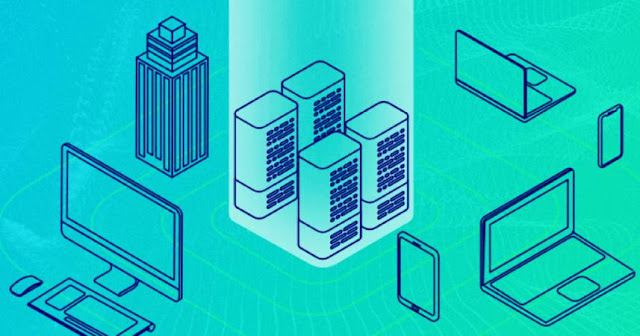Featured
- Get link
- X
- Other Apps
What Is Edge Computing?

Edge computing is a primary participant within the fourth industrial revolution, or Industry 4.0, setting computing at or near the statistics source to reduce latency and deliver real-time insights and information processing to organizations .
Content
What is Edge Computing?
What is a Perimeter Server?
What are a few examples of Edge Computing?
What are the benefits of facet computing?
Edge vs. Cloud Computing: is the Edge replacing the cloud?
Edge Computing Scenario
Imagine the motive force of a army automobile having to
pressure to a nearby outpost to reply to an unexpected assault.
The motive force does now not recognize precisely where the
outpost is. He handiest is aware of that he is about 15 miles from the army
base where he's presently stationed.
Fortunately, the motive force's vehicle is equipped with an
Internet of Things (IoT) digital assistant that gives real-time navigation,
geographic facts, or even weather-associated updates.
This clever assistant relays the driver's requests for statistics to a far off server in a centralized cloud records center positioned lots of miles away.
In flip, the cloud server uses this information generated by
using the tool to calculate the information asked by the motive force.
The interior of a statistics center. Many servers are
provided within the cabinets.
A data middle with a couple of rows of fully operational
server racks
Normally, this facts is transmitted to the virtual assistant
almost instantly. The assistant then makes use of this to manual the driving
force to the nearest outpost, whilst highlighting any boundaries or situations
that could obstruct their adventure or compromise their protection.
But there may be a problem this time.
The assistant is silent. Buffering.
Retrieving the requested information is taking longer than
traditional.
Because?
Because loads of different ground-primarily based IoT gadgets — wearables, security cameras, drones, weapon systems, clever speakers, and clever gadgets — are also transmitting records to the cloud the usage of the identical connection, resulting in a Massive nightmarish network slowdown.
As a end result, the driving force reports a delay or
latency inside the response time of their device.
And in turn, the driver cannot get hold of geographical
records or directions to the besieged outpost.
At least not on the right time.
So what's the answer?
Enter side computing.
An infographic describing the architecture of the brink
computing community
Infographic: An Illustration of an Edge Computing
Architecture
What is Edge Computing?
Edge Computing is a form of community architecture wherein
records generated by means of gadgets is processed at or close to the facts
supply.
Edge computing is maintained via embedded technology hooked
up in Internet of Things (IoT) devices or thru localized aspect servers, which
may be located in smaller cloud-primarily based facts facilities, referred to
as cloudlets or micro records centers.
You can consider area computing as an extension or supplement to cloud computing structure, in which facts is processed or saved in records facilities placed hundreds of miles, or even continents, from a given community. .
Essentially, edge computing distributes part of the data
processing workload from a cloud server to an embedded or localized pc this is
in near proximity to the facts-producing device, a method that mitigates
troubles latency as a result of a good sized amount of records switch. To the cloud.
An instance of such localized computer systems is a fringe
server.
A photo of a black and crimson server board
Photo: Edge servers pull statistics from IoT gadgets, giving
organizations the insights they need to attain their desires quicker and more
effectively.
What is a Perimeter Server?
An aspect server is a computer positioned near
records-generating devices in an side computing architecture.
It uses modern day computing structure to reduce latency in
facts transmission and filter out unimportant or irrelevant statistics before
it's miles in the end despatched to the cloud for storage.
Edge Servers are used as intermediaries between a network and a cloud facts middle, absorbing a number of the records processing sports of an IoT device and offering effects.
- Get link
- X
- Other Apps
Popular Posts
They use new tricks to sneak malware using TLS encryption
- Get link
- X
- Other Apps
Voice-Activated Appliances: The Future of Smart Living
- Get link
- X
- Other Apps

.jpg)